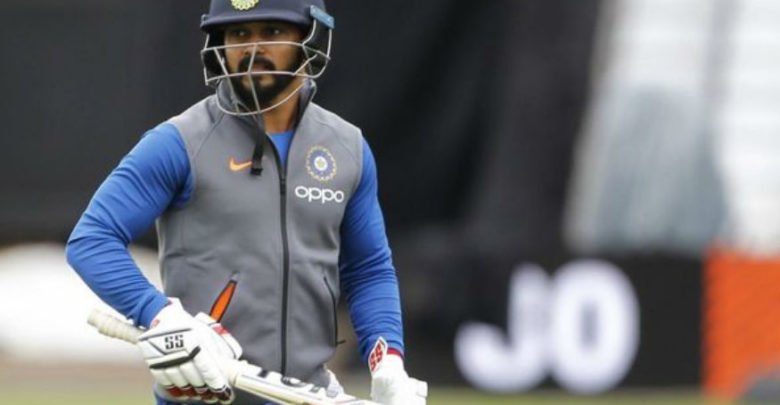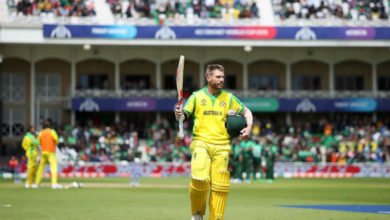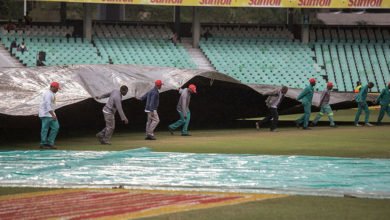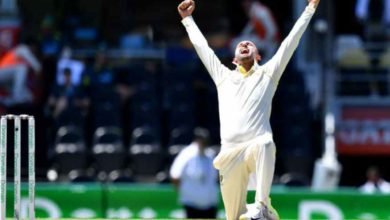CRICKETENGLISHLATEST UPDATESNEWS
India vs New Zealand | Kedar Jadhav’s Position Under the Scanner After Auckland Struggle

Virat Kohli hinted at changes to the Indian XI for the third and final One-Day International against New Zealand, citing the ‘nothing-to-lose’ scenario as an opportunity to play the ‘expressive’ brand of cricket they’re known for.
Losing the series with a game to go gives India the freedom to do that, and in the process look at a few options for the long run. One player who could be feeling the heat – not just for the third game, but also the three-ODI series against South Africa – is Kedar Jadhav.
Jadhav’s laboured 9 off 27 in the second ODI has given rise to talks about his position in the side. The murmurs began after the World Cup last year, given he is 34 and will be 38 by the 2023 World Cup. The voices have only gotten stronger with every ODI he has played.
It’s easy to understand why India are persisting with Jadhav for the short run. In the absence of MS Dhoni and Hardik Pandya, and with the likes of Shreyas Iyer and KL Rahul slipping into new roles in the middle order, India want Jadhav’s experience for the latter stages of an ODI innings. And of course, Jadhav is the only top six batsman in the side who can chip in with a few overs.
But recent patterns in India’s ODI cricket shows the two reasons might not be enough for Jadhav to hold his place for too long. Iyer had settled in nicely at No. 4, while Rahul has also adapted to the middle order well in the brief time he has been there. Ravindra Jadeja too is developing into a dependable option, which could give India more flexibility in their choice for the No. 6 batsman. Given all this, India might not feel the need for Jadhav’s experience in the position.
It must be said that despite his struggle at Auckland, Jadhav has not been too bad since the World Cup last year. His scores since the World Cup are:
16 (14) vs v West Indies in Port of Spain, coming in in the 42nd over batting first.
19* (12) vs v West Indies in Port of Spain, coming in in the 29th over chasing, with centurion Kohli at other end.
40 (35) vs West Indies in Chennai, coming in in the 37th over batting first.
16* (10) vs West Indies at Visakhapatnam, coming in in the 48th over batting first.
9 (10) vs West Indies in Cuttack, coming in in the 36th over of a chase.
26* (15) vs New Zealand in Hamilton, coming in in the 46th over batting first.
9 (27) vs New Zealand in Auckland, coming in in the 14th over of a chase.
In short, Jadhav has done a decent job in the little chances he has had while the team has batted first. The twin failures in the chases in Cuttack and Auckland, though, work against him.
For some reason, Jadhav has not been used as a bowling option too. In the seven completed ODIs he has featured in after the World Cup, he has bowled only thrice. He’s not bowled for four games in a row now; not even when New Zealand chased down 348 in Hamilton with the regular bowlers being hit all over the park. India have been without all-rounder Hardik, and Shivam Dube played only one ODI, which means they’ve been largely dependent on the five regular bowlers in the XI. In such a scenario, and given the development of other middle order batsmen, India could be better off going with Rishabh Pant or Manish Pandey with an eye on the long run.
There have been a couple of interesting statements from the Indian camp regarding the importance of ODIs this year. Following the loss in Auckland, Kohli said ODIs are not as relevant as the other two formats this year given there’s no World Cup in the vicinity. Ravi Shastri recently said ODIs could be used for T20 World Cup preparations. Neither of this adds up to explain the Jadhav scenario.
It might be true that ODIs do not have as much relevance this year, but India could still learn from other sides, particularly the world champions. England have dropped Liam Plunkett from their set up, and are playing Moeen Ali and Adil Rashid in ODIs only because they want them to have some game-time before the T20 World Cup. Morgan was candid about the team selection before the third ODI, saying Moeen and Rashid will play only if England want to give them a go before the T20Is.
“If they do come back (Rashid and Ali), it won’t be to play our strongest team,” said Morgan after the second ODI. “It might be to get them some cricket under their belt; we don’t have a T20 warm-up game, our priority is T20 cricket, and those two guys will come into contention for our best XI.
“If they do play, then that will be the reason behind it, not because we want to level the series. I think we would have played them today (in Durban) if we were trying to kick on (and win the series). We’re looking to know more about people and present opportunity. Yes, we want to win, but we also want to know a lot more about other guys come the end of the tour with a longer-term plan in place.
“I think it gives a platform for them to stake their claim for T20 and 50-over cricket because we’ve identified them as being the future and potential England cricketers for the next 10 years. It’s not about immediate results, it’s about investing time in those guys.”
Why England, India can learn from their own approach after the 2007 World Cup, when they let go of Sourav Ganguly and Rahul Dravid with an eye on the 2011 tournament, which they went on to win.
Unless India believe Jadhav is in their plans for the next World Cup.





